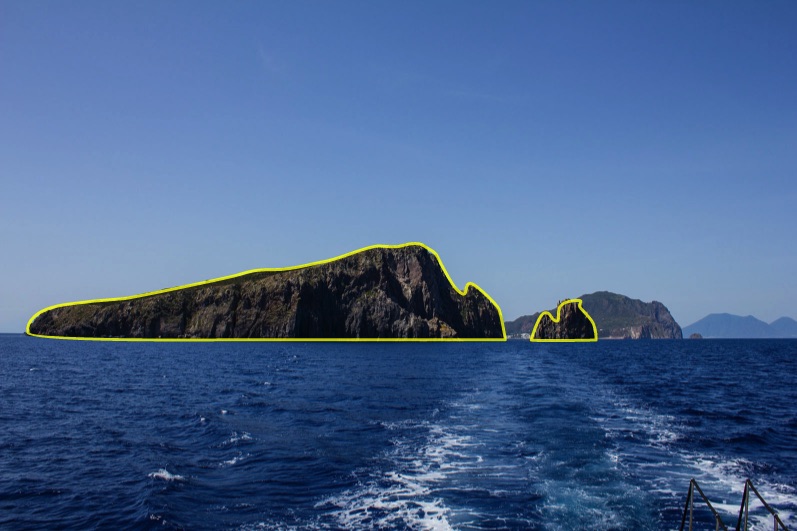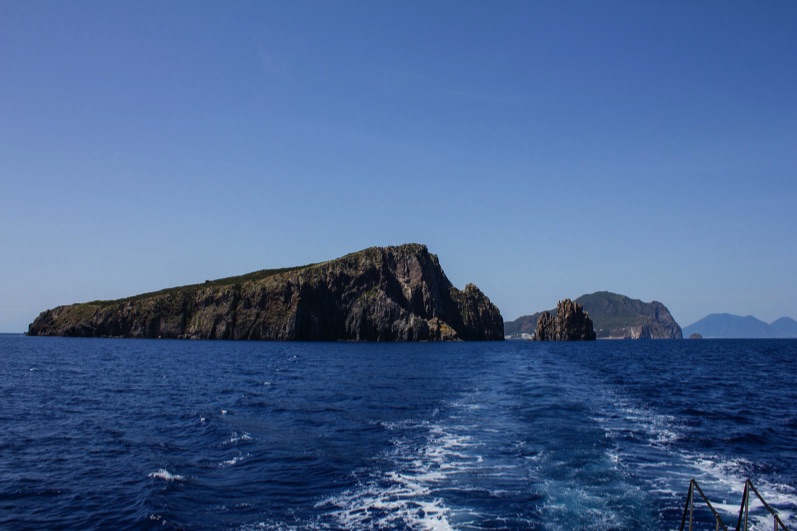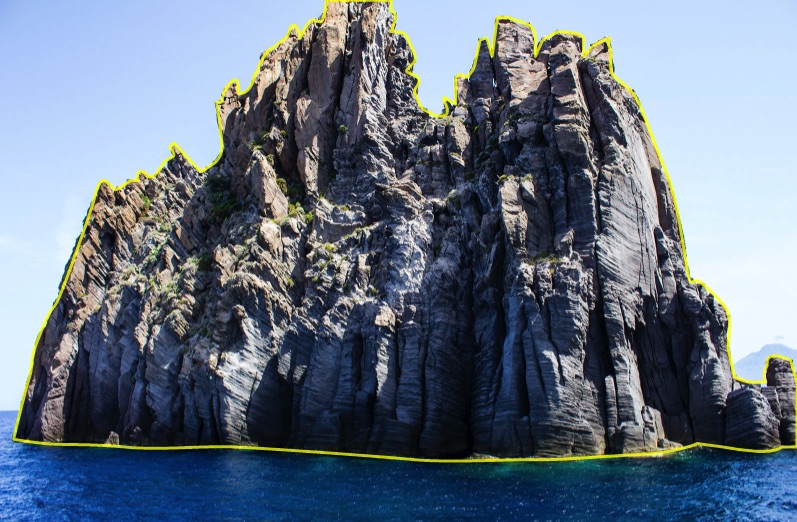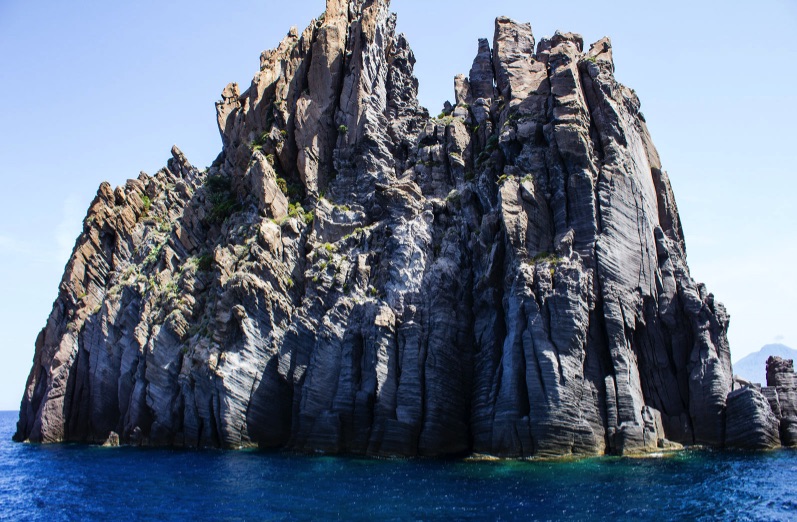The panorama from the village of Panarea is one of the most beautiful in the world. It consists of a dozen or so rocks and isles all facing the village, each with its own shape and colour.
Dattilo, the closest, is so called because of its pyramid shape with many spires at the summit and very smooth faces. The seabeds below are absolutely wonderful.
Bottaro and Lisca Bianca are two rocks that are flatter and similar in shape to one another.
What is impressive about these two rocks is the variety of colours: dark grey blocks surrounded by deep yellow sulphur crystals and bright white gypsum.
These are due to intense
underwater fumarolic activity
, which has recently reappeared.


Basiluzzo and Spinazzola are the most distant, in the direction of Stromboli. They are simply part of a collapsed
dome-flow
.


By taking a boat trip near its steep cliffs you can see how high the viscosity of the magma was at the time: in the part where Basiluzzo is facing Spinazzola, you can see many levels resting one on top of the other, almost as if they were many layers that were deformed by the weight of the one above. The whole coast of Basiluzzo is also full of caves, ravines, turquoise blue sea and rocky outcrops.